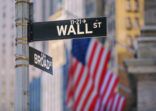Fund managers globally are launching more environmental-focused strategies, as interest to address environmental issues through sustainable investments has picked up in recent years.
In Europe, for example, more than a quarter of the 166 sustainable offerings launched last year had an environmental flavour with products aligned with the climate targets set out in the Paris Agreement, according to data from Morningstar Direct.
In Asia, the environment as an investment theme is relatively new, but interest has picked up, according to John Ng, head of fund selection at DBS.
“In Singapore, the government is making a lot of effort to address environmental issues, so awareness is being created, and a lot of private banks have also started to talk to their clients about this area of investments,” Ng said during FSA’s Spotlight On ESG virtual event last month.
DBS has become an advocate to promote sustainable investments. Sustainability assets now account for 41% of its private banking AUM, and it aims to have this increase by more than half by 2023.
To boost sustainable investments, DBS Private Bank will include new sustainable investment solutions. This year alone, it is looking at onboarding at least 10 sustainable products, including one global environment fund.
CORE OR PERIPHERAL?
Asset managers believe that given the need to address environmental issues, mutual funds focusing on the theme should be part of a client’s core portfolio.
Harry Thomas, portfolio manager at TT International, believes that it will be inevitable for companies providing environmental solutions to be included in investors’ portfolios.
“All aspects in the economy are going to be touched by these transition companies,” Thomas said in the panel discussion.
“We can have access to a broad range of growth technologies impacting areas of life in the way we make energy, food, clothes and buildings. The impact is so broad-based, so they can be part of the core allocation of an investor’s portfolio.”
Thomas manages the TT Environmental Solutions Fund, which invests in companies that make a positive impact on the environment. These companies include those that are focused on responsible consumption, the circular economy, forestry and agriculture and biodiversity.
“We are finding there are lots of opportunities for industries that are going to be 10 times bigger in the next 20 years, such as electric vehicles and offshore wind. But there are also nascent opportunities, particularly away from the carbon thematic, around themes in biodiversity and recycling with plastics or fibres for clothing,” he added.
John Cappetta, head of private banking for Asia advisory at Ninety One, also believes that environmental funds should be a core part of a client’s portfolio.
“The environment as an investment theme is in its early stages. In this scenario, you can say that we are at the tip of the iceberg, but when talking about climate change, if we do not change, we might not be able to use the term iceberg anymore, so it needs to be a core part of your portfolio,” Cappetta said during the event.
“If you take a climate change or an environmental fund and pair that together with a very good solid quality global equity fund, it will give you diversification benefits. There are also some tactical ETFs that you can play on the peripheral,” he said during the event.
The firm manages the Ninety One Global Environment Fund, which seeks to identify opportunities in decarbonisation and climate change. It looks at three broad themes: renewable energy, electrification and resource efficiency.
The renewable energy space includes solar, wind, smart grids and networks, while electric and autonomous vehicles, battery and semiconductors belong to the electrification bucket. Resource efficiency includes companies that focus on energy efficiency, water and land efficiency and building materials, according to Cappetta.
For DBS, it boils down to whether a fund diversified or concentrated to a particular area.
“At the end of the day, we need to see what is in a fund and it really depends on what’s on the underlying,” DBS’s Ng said.
“If it is broadly diversified and very well spread out, it can be a larger part of the portfolio. If it is narrow and just focusing on a few sub-sectors, they will be considered as a thematic product,”
For DBS, thematic products account for 10-15% of a client’s overall portfolio.
FSA’s Spotlight On: ESG live event is now available on-demand. To watch, click here.
















